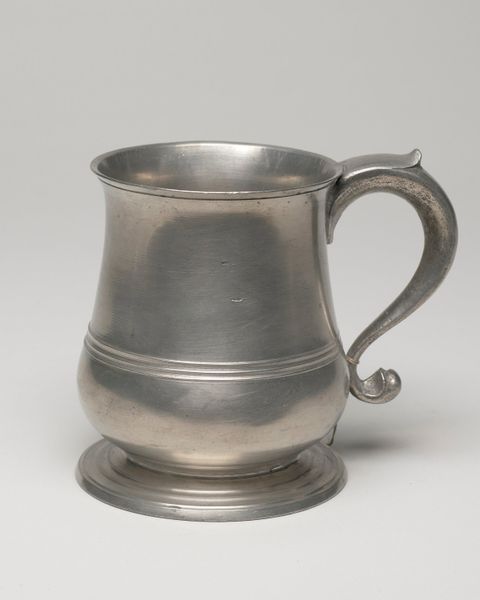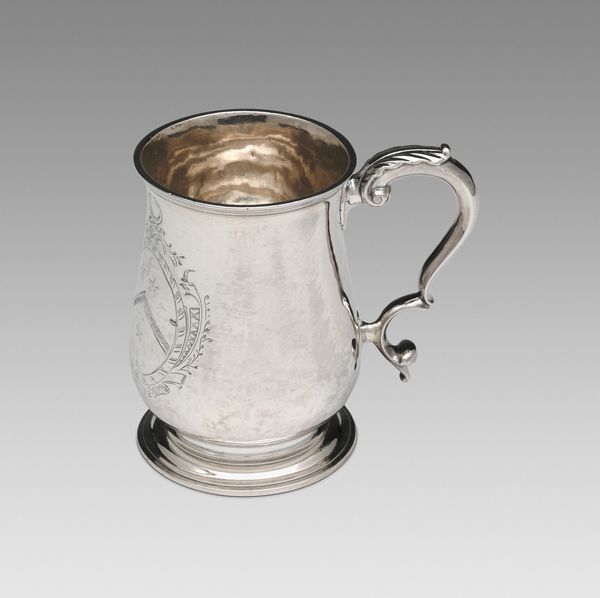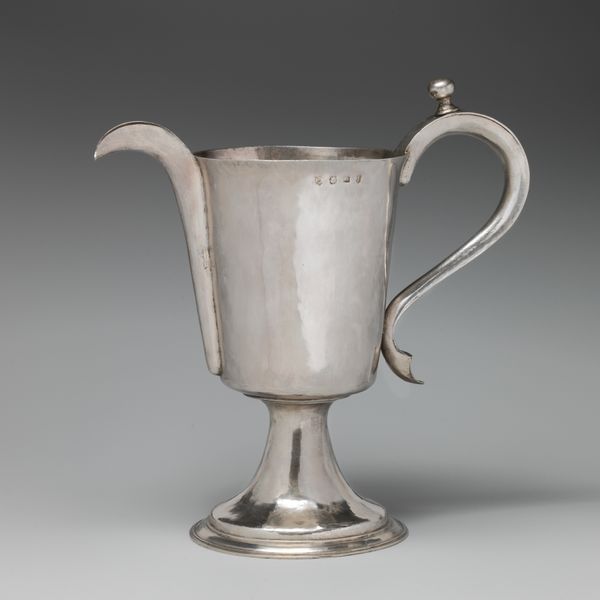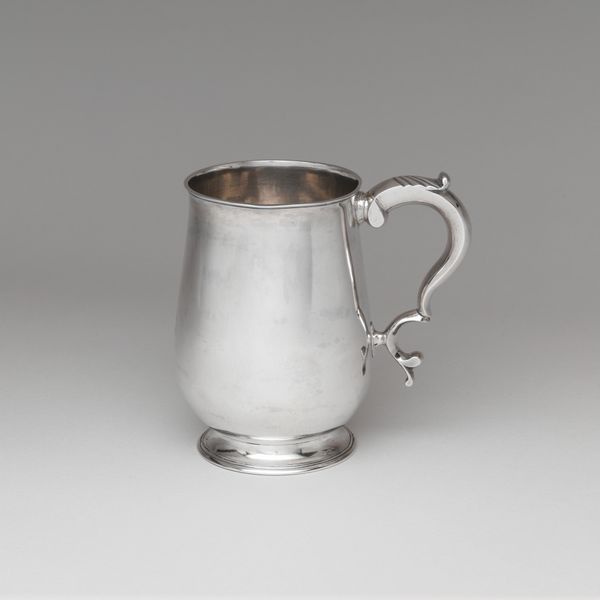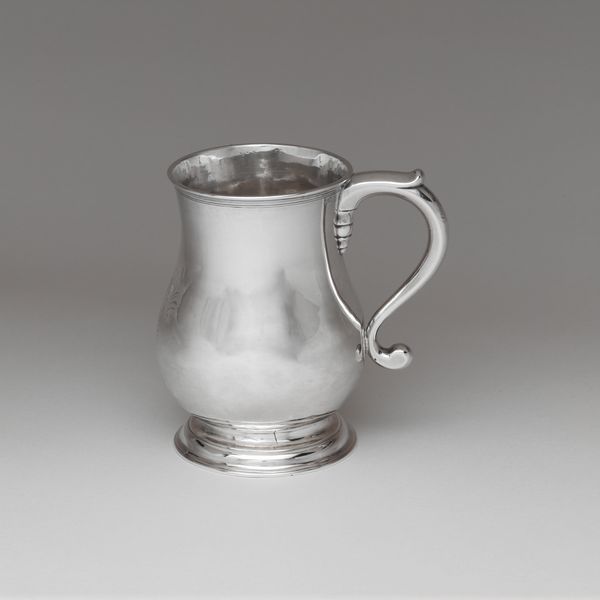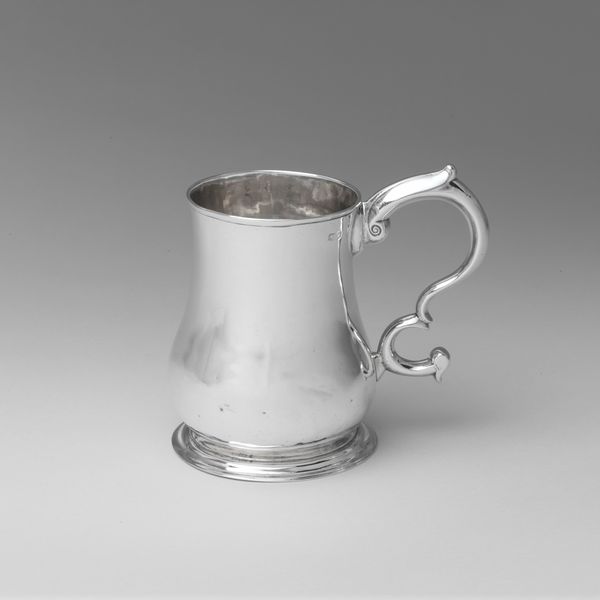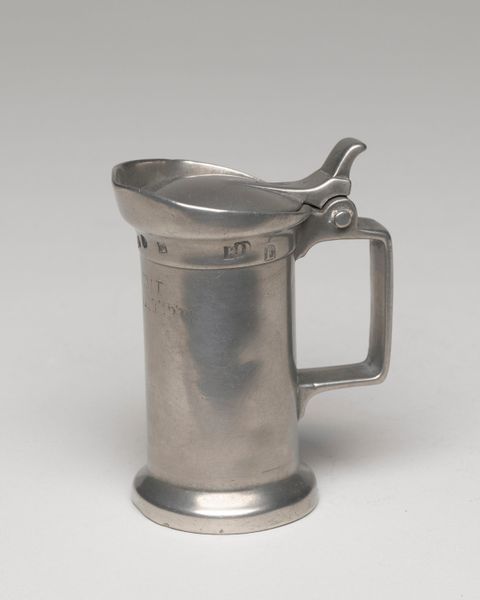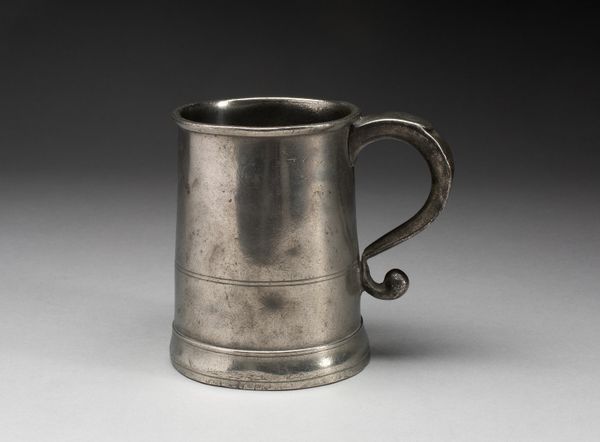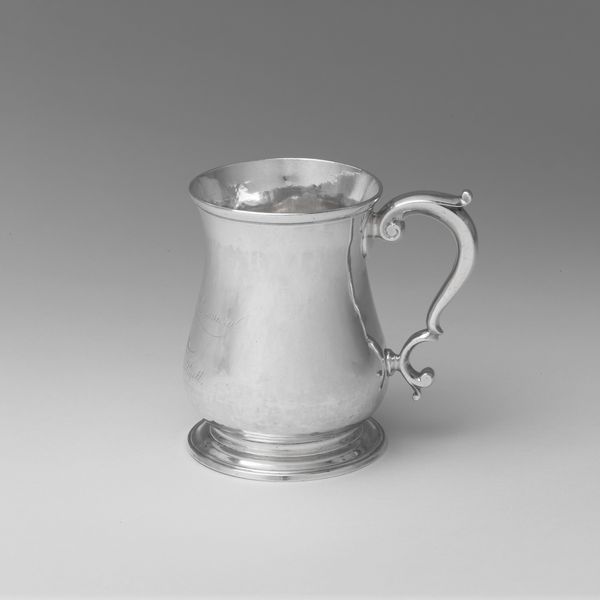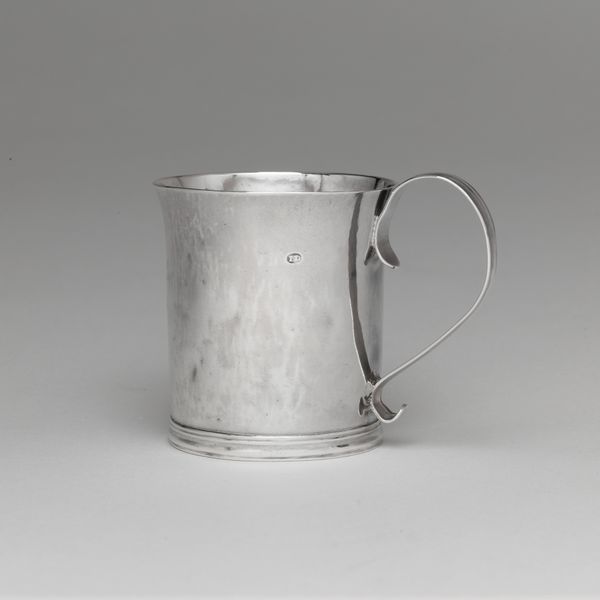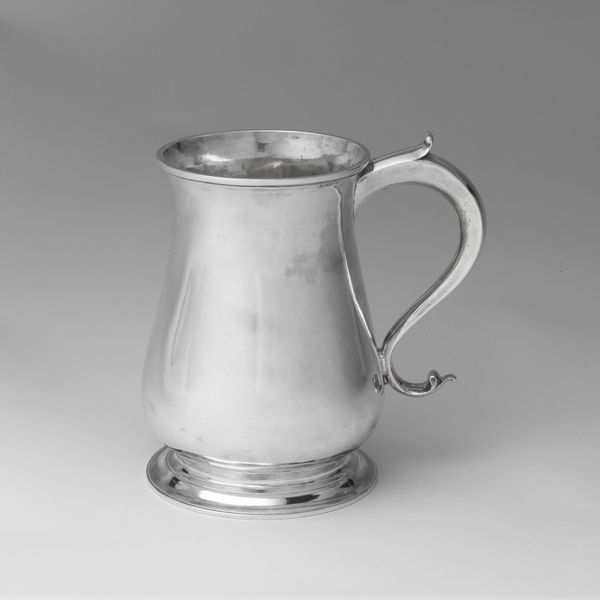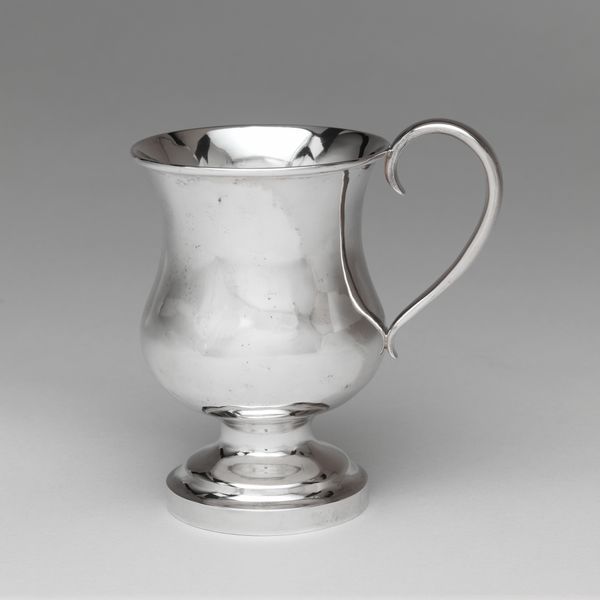
metal
#
metal
#
realism
Dimensions: 5 1/8 x 4 3/4 x 3 1/4in. (13 x 12.1 x 8.3cm)
Copyright: Public Domain
Editor: Here we have "Measure," an anonymous metalwork piece created in 1826 and housed at the Minneapolis Institute of Art. There’s something so unassuming about it, yet its very existence implies a social context—celebrations, perhaps? How do you interpret this work? Curator: This unassuming object is deceptive. Consider the early 19th century. Whose measurements were being valued, and whose were dismissed? Standardized measures, seemingly objective, were and are often tools of control, shaping economies and social interactions to benefit certain groups over others. Who was drinking from this, and within what system of power were they operating? Editor: That’s a powerful point. So, this seemingly simple mug…it represents larger power structures? I hadn’t thought of it that way. Curator: Precisely. Consider, for example, the gendered history of domestic spaces. Is it a male or a female drinking from this object? Its labor is perhaps made invisibile. What rituals are formed in this era that reinforce social norms? Who gets invited, and who does not? It may even offer a visual encoding of class and identity, if we consider it as a signifier in portraiture, too. This little "Measure" becomes far more weighty, no? Editor: It really does. It is less about the aesthetic beauty and more about a material manifestation of control and bias in history, right? This object carries narratives beyond its form and function. Thanks for shining some light on this. Curator: And thank you. It is objects such as these that help us interrogate historical and contemporary dynamics. Even the most quotidian objects are capable of sparking discussions around inequities in different cultures.
Comments
No comments
Be the first to comment and join the conversation on the ultimate creative platform.
